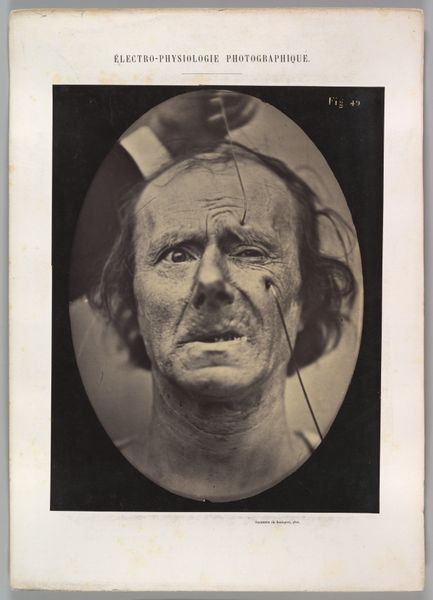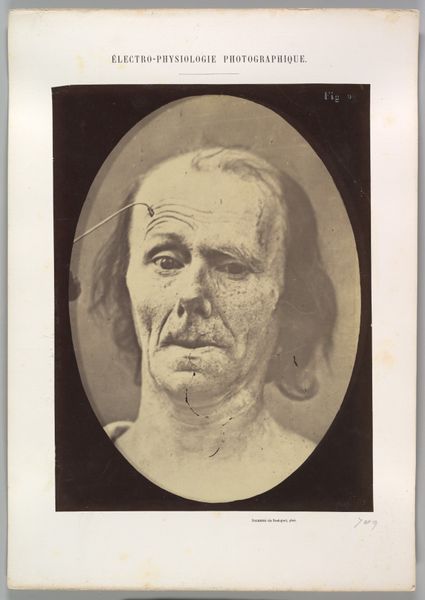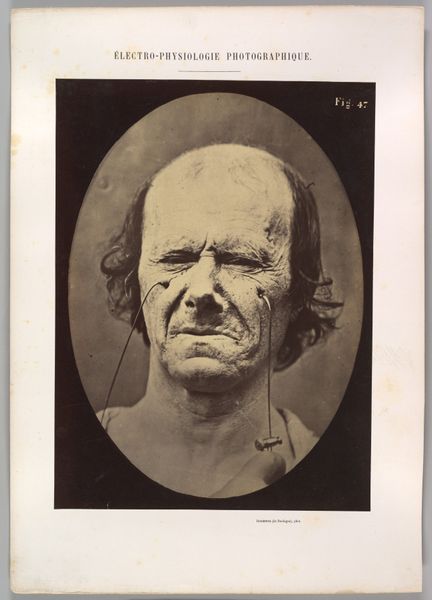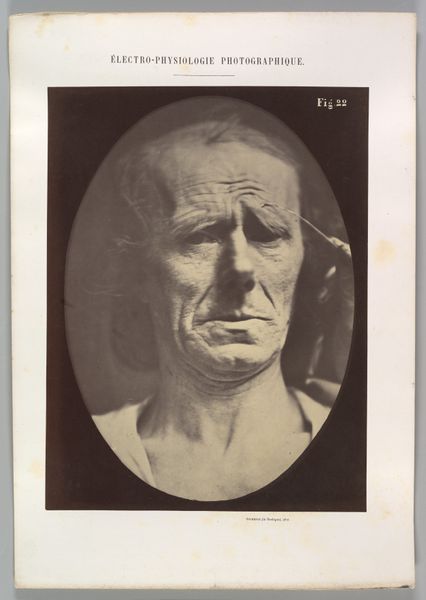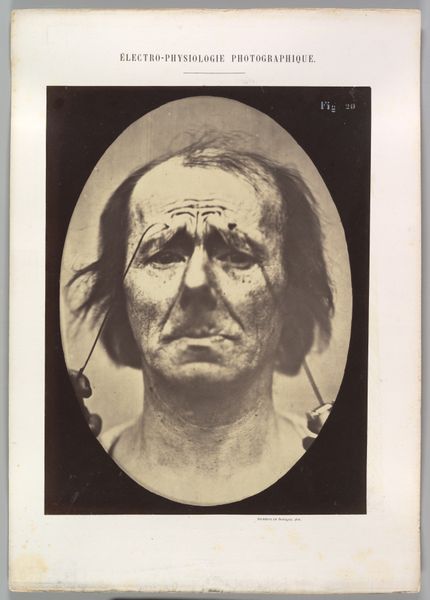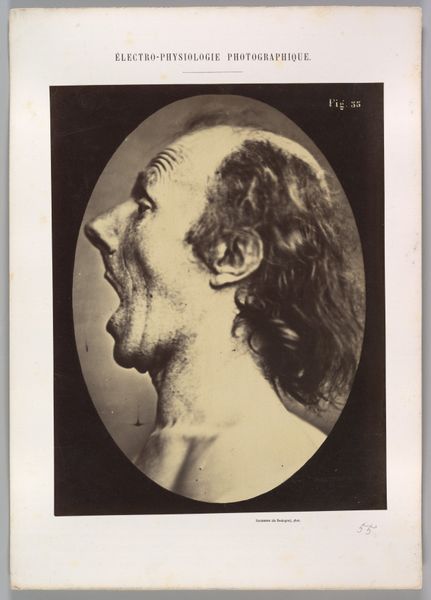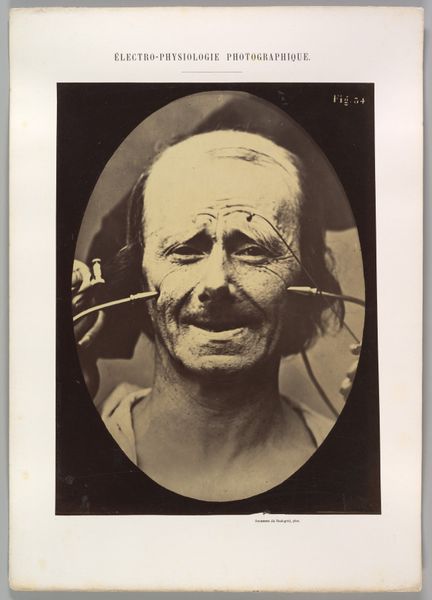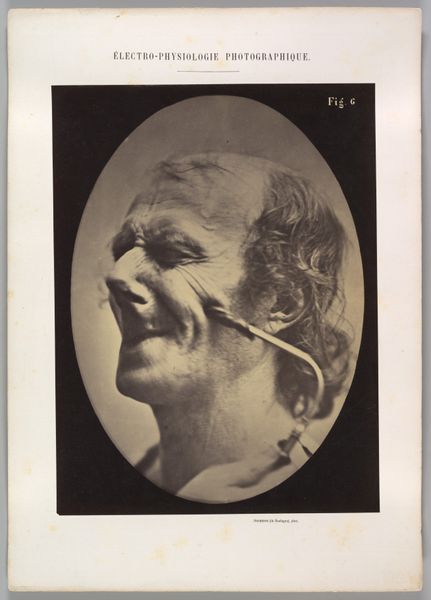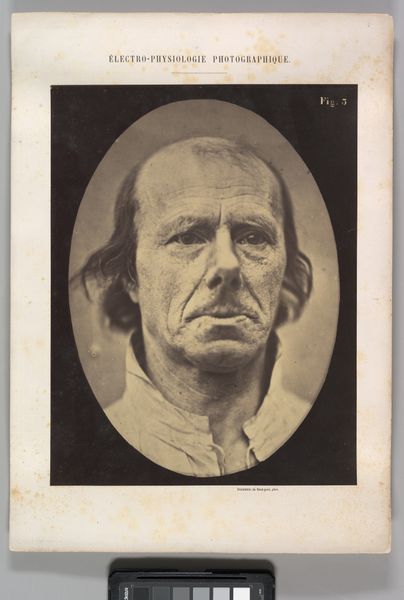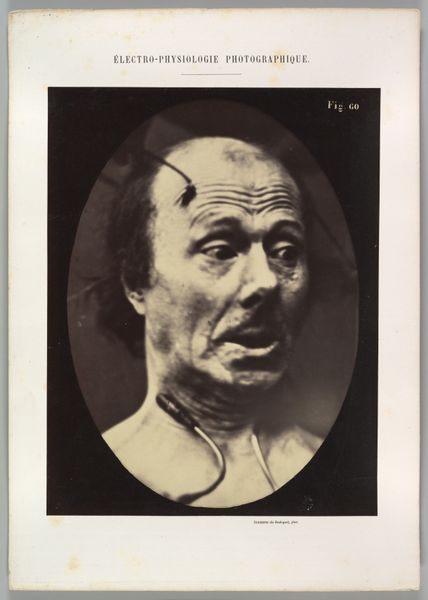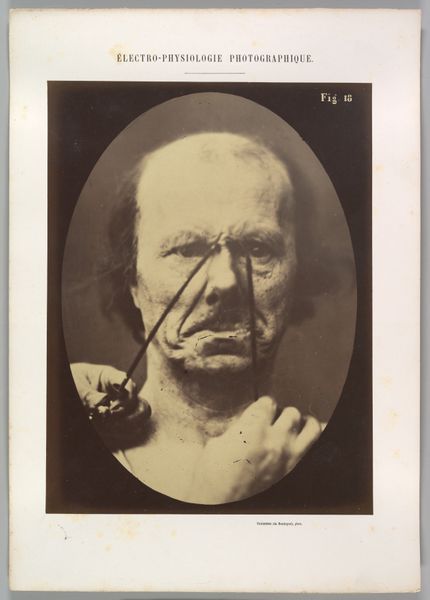
Figure 21: Painful recollection and recollection or calling something to mind 1854 - 1856
0:00
0:00
daguerreotype, photography
#
portrait
#
daguerreotype
#
photography
#
realism
Dimensions: Image (Oval): 28.4 × 20.3 cm (11 3/16 × 8 in.) Sheet: 29.7 × 22.7 cm (11 11/16 × 8 15/16 in.) Mount: 40.2 × 28.6 cm (15 13/16 × 11 1/4 in.)
Copyright: Public Domain
Editor: Here we have Guillaume Duchenne's daguerreotype, "Figure 21: Painful recollection and recollection or calling something to mind," created between 1854 and 1856. It’s currently held at the Metropolitan Museum of Art. I find the subject's expression so compelling. What do you see in this piece? Curator: Intriguing. The lines etched into the subject's face—the deep furrows of the brow, the delicate web around the eyes—narrate a story before any explicit cultural reading. Notice the formal opposition of the taught skin around the left eye, versus the slackness of the cheek. Observe, as well, how the angle of the electrode is aligned with that tension around the left eye. Do you find that it creates any type of…visual…resonance? Editor: Yes, definitely. The stark contrast emphasizes the deliberate manipulation of the facial muscles. I guess the photograph serves more as a clinical document, rather than portraiture, because the emotion appears almost artificially induced? Curator: Precisely. The technical approach elevates the indexicality of the photograph as data; and it also diminishes any concern with capturing something like the subject's soul. Instead, Duchenne seems invested in mapping the topography of affect through pure, descriptive form. Consider how the very narrow depth-of-field concentrates our gaze on the topography of his face; observe, as well, how its tonality reduces his three-dimensional features to two dimensions. Do these artistic or technological decisions emphasize one thing versus another, to you? Editor: The choices definitely give more weight to the *science* he’s documenting. Thanks to his treatment of form, it feels starkly empirical, almost clinical, now that you point it out. Curator: Agreed. It serves as an uncanny intersection of art, science, and human expression. The piece prompts us to contemplate the formal construction of the self and its representation through technology. Editor: Well, looking at the technical precision through a formal lens gives me a much greater appreciation for the intention and effect of the photograph.
Comments
No comments
Be the first to comment and join the conversation on the ultimate creative platform.
